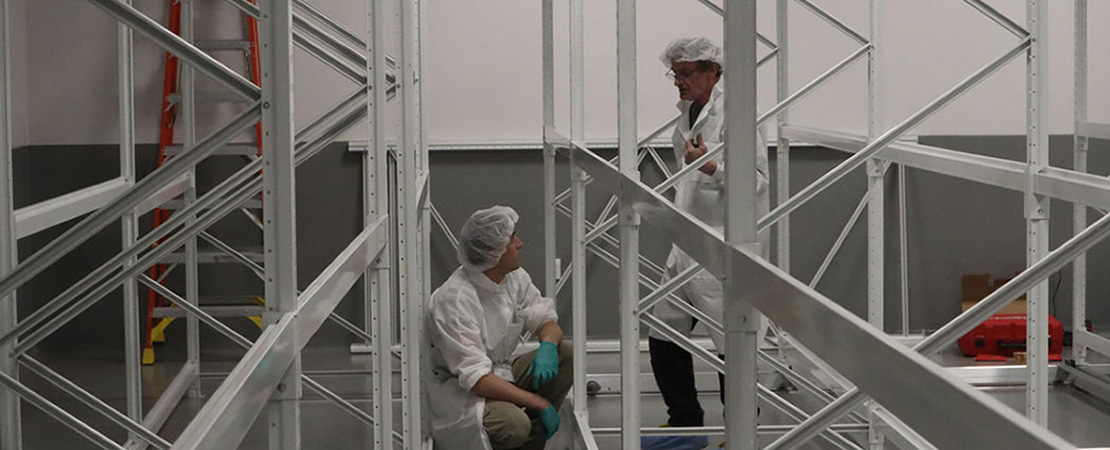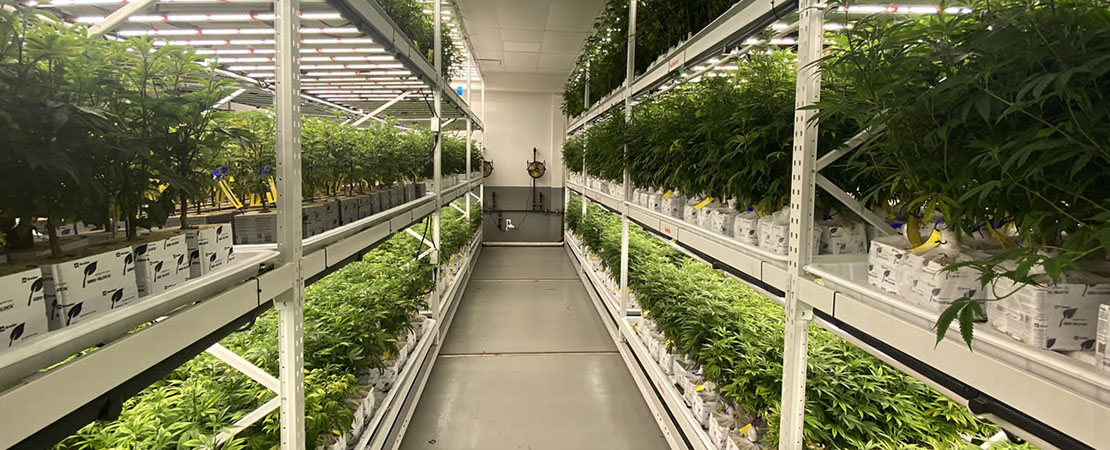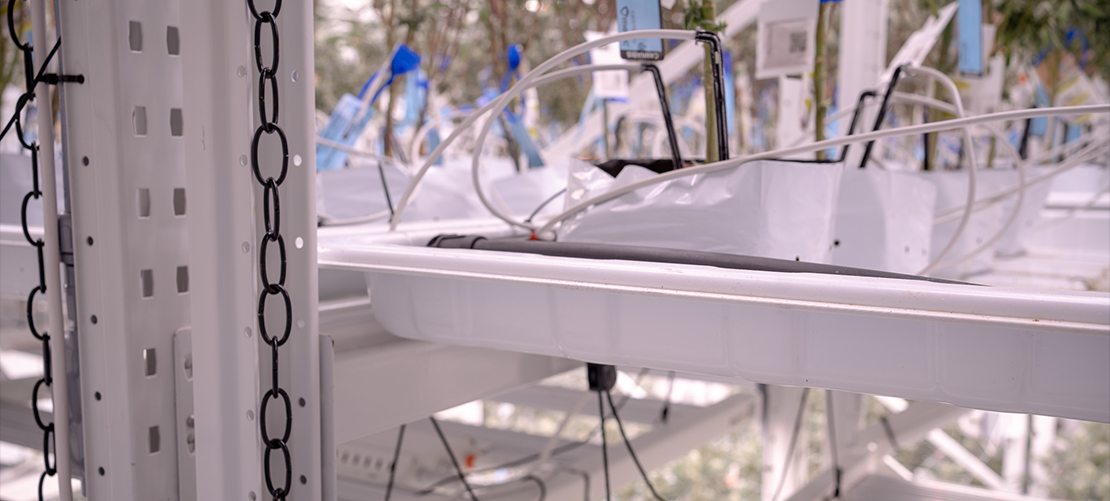Vertical Growing Systems: The Money Saving Strategy for Indoor Cannabis Growing
Vertical growing systems are the improved ways of cultivating cannabis plants and reaping huge profits. They are a growing field of indoor growing with a promise of helping you make the most of your real estate by allowing you to grow up – utilizing your overhead space.
This approach allows you to utilize your available grow space and brings in major energy savings on ventilation, lighting, humidity, and temperature regulation.
For example, on lighting, vertical systems leverage LED lights. LED lights allow you to grow at half the heat of HIPs while utilizing the same cooling that would be needed for horizontal farms.
Notably, growing cannabis indoors isn’t your ordinary walk in the park. It has its challenges. However, there are key steps you can follow to ensure maximum yield growing cannabis indoors while using less energy with the help of vertical grow systems.
What Is A Vertical Cannabis Growing System?
Vertical grow systems or vertical grow rack systems are multiple shelves stacked to create green towers of cannabis. The vertical grow rack systems host the cannabis plants, irrigation equipment, and lighting.
The systems rely on vertical farming technology.
Vertical farming technology or controlled environment agriculture (CEA) technology is a cultivation method that allows you to plant your cannabis canopies indoors.
CEA technology involves creating the ideal indoor environment that necessitates the growth of your plants. This includes providing nutrients, good airflow, CO2, and light for the plants. All these conditions are provided artificially by using HVACs, CO2 burners, fans, and LED lights.
In addition to tuning the environmental conditions, you need to look into the operation and planning of your grow room. The latter really determines the savings or losses you will make in your grow-op.
What are these factors to consider in planning for your vertical growing systems?
4 Pro Tips in Setting up Your Vertical Cannabis Growing System for Success
1. Plan the Layout of Your Equipment 
One primary consideration with vertical systems is how you will reach the upper tiers. This may necessitate the use of ladders and scaffolding. Therefore one needs to account for this while also ensuring no space is wasted on creating space for aisles.
One key invention is the use of mobile carriages. They are movable shelvings that help eliminate the need for static aisles. The mobile carriages are carried on tracks that allow you to create aisles as needed within the grow space and tend to upper tiers. This helps eliminate static aisles saving even more space.
In other words, the rows between grow racks systems don’t need to be more than 4 feet wide; hence, if using five static racks, you’ve saved about 10 feet of space by using mobile carriages.
Moreover, you need to have capacity evaluations of your grow space to help you evaluate or reevaluate your business goals for the operation. Planning the layout helps with these calculations refining your business plan.
Major vertical systems installation companies, in addition to capacity evaluations, do CAD drawings of your available space to ensure every square footage of your space is utilized. Moreover, the CAD designs are customized to every customer’s needs; hence you get what’s ideal for your space while meeting municipal regulations.
2. Consider the Spacing of Crops on Your Vertical Cannabis Growing System
The space between your light fixtures and cannabis canopies needs to be regulated.
Previously, HPS lights were the norm in growing cannabis plants indoors. However, the significant advancements in LED lights and lower price points have brought about a shift in increasing their use.
HPS or High-pressure sodium lights were preferred for their high intensity, which is necessary for growing cannabis. However, with the advent of vertical farming systems, the proximity of plants to the light source would result in scorched plants, hence poor yields.
This resulted in a search for solutions, and this is where Low emitting diodes or LED lights came in. Though more expensive than HPS lights, they are energy-saving and give the right intensity plants need, considering their close proximity without scorching them.
LED lights can be placed up to 6 inches from the crops without showing signs of light or heat stress.
Therefore you need your vertical farming systems customized to the variety of cannabis plants you’ll be growing. For vertical growing systems, short cannabis varieties are preferred.
Moreover, you can plant auto-flowering cannabis varieties. These cannabis plants have fast turnover while remaining robust, resilient, and of high quality. They are a bonus if you are starting on commercial vertical farming, as they have low-skill requirements.
3. Manage microclimates in Your Vertical Cannabis Growing Systems
Microclimates are one of the major challenges faced by vertical farming facilities. This is because the vertical grow racks and installed lighting can impede proper airflow.
Microclimate refers to any set of atmospheric conditions that differ from the climate surrounding it, typically caused by a lack of air circulation.
Air circulation helps draw away the moisture released by plants during respiration. If the moisture released remains in a particular section of a room, that area will have higher temperatures than the rest, hence the formation of microclimates.
The cannabis plants will be exposed to different environments, causing different reactions that result in an inconsistent yield quality. Therefore, it’s in the farmer’s best interest to limit the formation of microclimates for a better bottom line.
One key solution to this challenge is installing environmental monitoring software to automate your lighting and ventilation equipment.
The environment monitoring software leverages sensors mounted throughout your indoor grow room that measure critical parameters like temperature and humidity changes. This will allow you to monitor microclimates’ formation and make the necessary adjustments.
Moreover, there are other interesting solutions, like utilizing frozen slurry piping to localize air conditioning in the vertical grow racks. The frozen slurry is delivered using pipes running throughout your racks, cooling the plants and lighting, lowering the formation of microclimates.
4. Quality of Vertical Growing System Installation Service 
Embarking on deploying the use of vertical grow racks for your cannabis indoor grow room is an expensive undertaking. This means you must first get it right when purchasing your vertical farming systems.
Partnering with the right vertical farming systems installation company is paramount to ensuring you don’t get it wrong at the onset.
MMI Agriculture is a vertical growing systems installation company available in all states where cannabis is legal, like California, Arizona, Alaska, and WashingtonDC. We provide customized vertical grow racks built for rigidity and durability.
Moreover, we offer installation services backed with a 10-year warranty on parts and labor. This ensures you get vertical systems that get you started well and long after, helping you focus on maximizing profits and improving operations.
Get Started With Vertical Growing System For Your Cannabis Indoor Grow Today
Success getting started, or upgrading to vertical farming systems is easy but can also turn ugly if you aren’t in step with all it entails.
For a start, you need your grow space mapped out and the spacing between racks well defined. Then cater to your plants’ well-being by eliminating microclimates and finally partner with a competent vertical systems installation company.
At MMI Agriculture, we offer expertise in vertical grow racks systems planning and installation. Contact us today for a quote.















